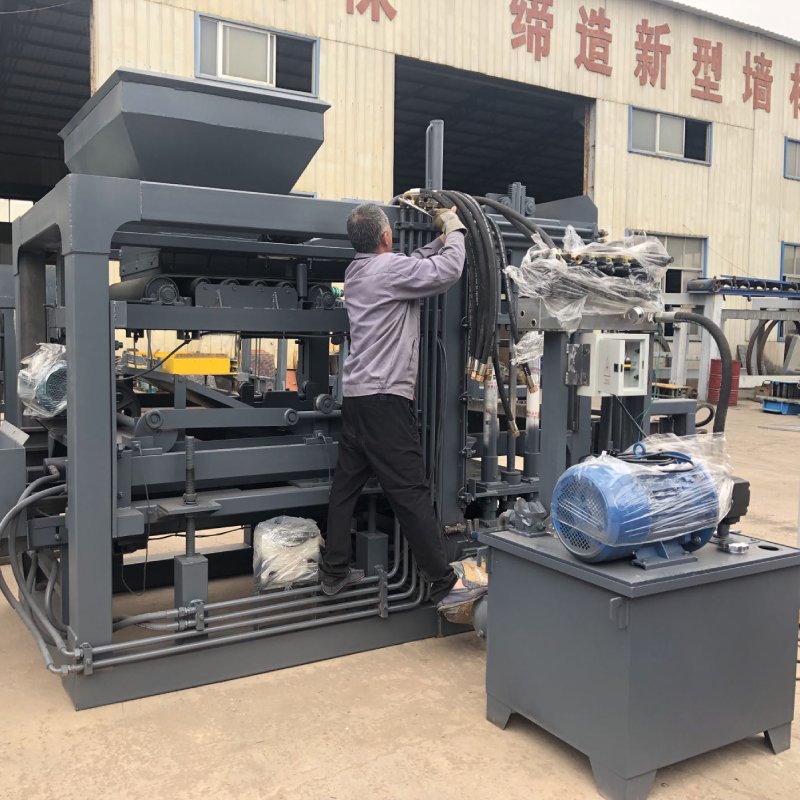
Image source Aiwei Block Machine
The construction industry stands as a testament to human innovation and progress. Over centuries, it has evolved from rudimentary techniques to complex systems that rely on advanced technology. Among the many pivotal advancements that have shaped construction, the development of block brick making machines holds a special place. These machines have not only revolutionized the production of bricks but have also transformed the construction industry as a whole. In this extensive article, we will delve into how block brick making machines have shaped and continue to influence the construction industry.
Chapter 1: The Building Blocks of Construction
Before we explore the transformative impact of block brick making machines, it’s crucial to understand the significance of bricks in construction.
1.1 The Role of Bricks
- Historical Significance: Bricks have been used in construction for thousands of years, dating back to ancient civilizations like the Mesopotamians and Egyptians.
- Versatility: Bricks are versatile and can be used for various construction purposes, from load-bearing walls to decorative facades.
- Durability: When properly manufactured and laid, bricks are known for their durability, providing structures with longevity.
- Thermal Insulation: Bricks offer excellent thermal insulation, helping to regulate indoor temperatures.
1.2 Traditional Brick-Making Methods
- Hand Molding: Historically, bricks were made by hand, where clay was shaped into brick forms and left to dry.
- Fired Bricks: The advent of kilns allowed for the production of fired bricks, which were stronger and more resistant to the elements.
Chapter 2: The Birth of Block Brick Making Machines
The Industrial Revolution in the 18th and 19th centuries was a pivotal moment in the history of construction technology. This era saw the emergence of the first block brick making machines.
2.1 Early Brick Machines
- Manual Operation: Early machines required manual labor to operate, but they significantly increased production rates compared to hand-making bricks.
- Advancements in Power: Steam power and later, electric motors, revolutionized brick production.
2.2 Benefits of Machine-Made Bricks
- Consistency: Machine-made bricks were uniform in size and shape, enhancing structural stability.
- Mass Production: Brick-making machines enabled mass production, making bricks more accessible and affordable.
Chapter 3: Modern Block Brick Making Machines
In the 21st century, block brick making machines have evolved into sophisticated pieces of machinery. This chapter explores the characteristics and capabilities of modern machines.
3.1 Automation and Efficiency
- Fully Automated Machines: These machines require minimal human intervention, leading to high production rates and efficiency.
- Semi-Automatic Machines: Combining automation and manual operation, these machines strike a balance between efficiency and flexibility.
3.2 Advanced Molding and Compression
- High-Pressure Compression: Modern machines use high-pressure techniques to create bricks with superior strength and durability.
- Customization: Some machines allow for the customization of brick sizes and designs.
3.3 Sustainable Practices
- Recycled Materials: Innovative block brick making machines can produce bricks from recycled materials like fly ash, slag, and even plastic waste.
- Energy Efficiency: Many modern machines are designed to be energy-efficient, reducing their environmental impact.
Chapter 4: Impact on Construction Practices
The adoption of block brick making machines has had a profound influence on construction practices and methodologies.
4.1 Efficiency and Speed
- Shorter Construction Timelines: The increased production rates of machine-made bricks have led to shorter construction timelines for projects of all scales.
- Cost Reduction: Reduced labor costs and faster construction times contribute to overall cost savings.
4.2 Structural Integrity
- Consistency: Machine-made bricks are consistent in size and shape, ensuring uniformity in construction, which enhances structural integrity.
- Durability: High-pressure compression techniques result in more durable bricks, making structures resilient.
4.3 Sustainability
- Reduced Environmental Impact: The use of recycled materials and energy-efficient machines align with sustainability goals in the construction industry.
- Waste Reduction: Modern machines generate less waste during brick production.
Chapter 5: Future Trends and Innovations
The evolution of block brick making machines continues, with exciting trends and innovations on the horizon.
5.1 3D Printing Technology
- 3D Printed Bricks: 3D printing technology is being applied to brick making, allowing for intricate and customized designs.
- On-Site Printing: The potential for on-site 3D printing of bricks could revolutionize construction practices.
5.2 Robotics and Automation
- Robotic Bricklayers: Robots are being developed to lay bricks with precision and speed, further reducing labor costs.
5.3 Sustainable Materials
- Biodegradable Bricks: Researchers are exploring the use of biodegradable materials for brick production, offering an eco-friendly alternative.
Chapter 6: Challenges and Considerations
While the impact of block brick making machines is overwhelmingly positive, there are challenges and considerations to address.
6.1 Initial Investment
- Cost of Machines: High-quality block brick making machines can be expensive, potentially limiting access for smaller construction businesses.
6.2 Skilled Labor
- Training and Skills: Operators require training to operate and maintain advanced machines effectively.
6.3 Regulatory Compliance
- Environmental Regulations: As sustainability becomes a priority, regulations governing brick production may become stricter.
Chapter 7: Conclusion
Block brick making machines have played a pivotal role in shaping the construction industry as we know it today. From the labor-intensive methods of the past to the highly automated and sustainable practices of the present, these machines have continuously pushed the boundaries of what is possible in construction. As we look to the future, we can anticipate even more exciting innovations that will further enhance the efficiency, sustainability, and creativity of brick production and construction. The journey of how block brick making machines shape the construction industry is an ever-evolving and inspiring narrative of human ingenuity.
